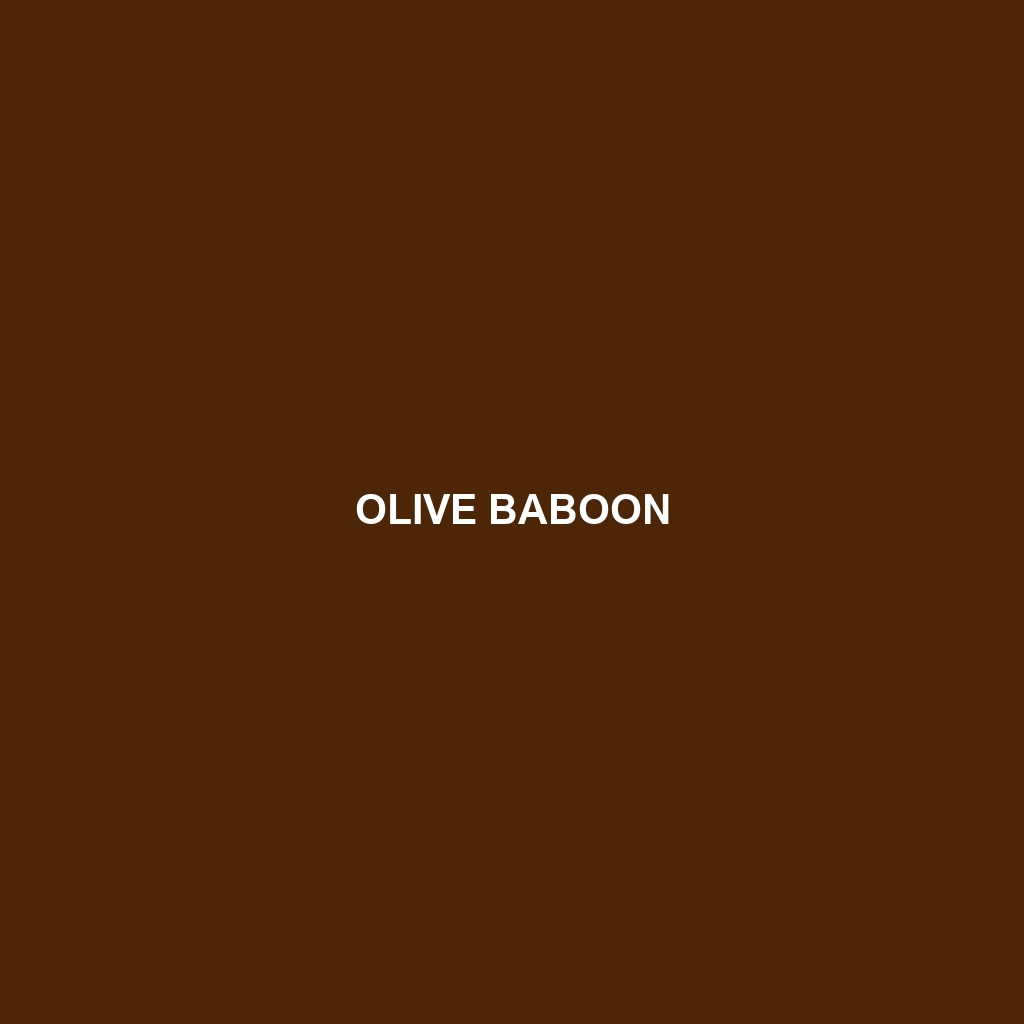Olive Baboon (Papio anubis)
The Olive Baboon, scientifically named *Papio anubis*, is one of the most widespread species of baboons and is easily identifiable by its distinctive olive-colored coat. Known for their adaptability and complex social structures, Olive Baboons are highly intelligent primates that play a significant role in their ecosystems. These quadrupedal mammals are native to a wide range of environments across Africa, from savannas and grasslands to forests and mountainous regions.
Physical Characteristics
Size: Adult males typically measure between 60 to 70 cm (24 to 28 inches) in body length, excluding the tail, while females are slightly smaller, ranging from 50 to 60 cm (20 to 24 inches). Males weigh between 22 to 37 kg (48 to 82 lbs), and females weigh around 12 to 17 kg (26 to 37 lbs).
Coloration: The Olive Baboon gets its name from its greenish-grey fur with a slight olive tint. The face, ears, and hands are darker, often a blackish color.
Special Features: Olive Baboons have a pronounced face with a long snout. Males exhibit large canine teeth, which they use for defense and dominance displays. Both sexes have ischial callosities, which are tough patches of skin on their buttocks, aiding in comfortable sitting on rough surfaces.
Behaviors
Social Interactions: Olive Baboons are highly social animals that live in large, complex groups called troops, which can consist of 20 to over 100 individuals. These troops have a strict hierarchy, with dominant males often controlling access to resources and mating opportunities. Social grooming is crucial within the troop, helping to strengthen bonds and maintain social order.
Feeding Habits: Olive Baboons are omnivorous, exhibiting a highly varied diet that includes fruits, seeds, leaves, insects, small mammals, and even birds. They are opportunistic feeders and can adapt their diet based on the availability of food resources.
Ecological Roles: As omnivores, Olive Baboons play a pivotal role in their ecosystems by aiding in seed dispersal and controlling insect populations. Their foraging behavior also helps to aerate the soil and promote plant growth.
Habitats
Olive Baboons are highly adaptable and can be found in a broad range of habitats across Africa, including:
Savannas: Open grasslands where they forage for food during the day.
Woodlands: Providing both food resources and protection from predators.
Forests: Offering abundant food sources and tree canopies for sleeping.
Mountains: Inhabiting elevations where they can find unique food resources and shelter.
Adaptations
Physical Adaptations: Olive Baboons have strong limbs and prehensile toes, allowing them to climb trees easily. Their sharp vision and keen sense of smell help them locate food and detect predators.
Behavioral Adaptations: Their highly adaptable diet enables them to survive in varied environments. The complex social structure of their troops provides protection against predators and ensures efficient resource sharing.
Conservation Status
The Olive Baboon is currently classified as “Least Concern” by the International Union for Conservation of Nature (IUCN). However, they face threats from habitat loss, hunting, and conflicts with humans, particularly in agricultural areas.
Fascinating Fun Facts
Communication: Olive Baboons use a wide range of vocalizations, facial expressions, and body postures to communicate with each other. These include grunts, barks, and yawns that signify different social cues.
Intelligence: They are known for their problem-solving abilities and use of tools, such as using sticks to dig for roots or stones to crack open nuts.
Cultural Significance: Olive Baboons have been depicted in various African cultures and folklore, often symbolizing loyalty, intelligence, and adaptability.
By understanding and appreciating these fascinating primates, we can better appreciate the intricate web of life that they help sustain in their natural habitats.
